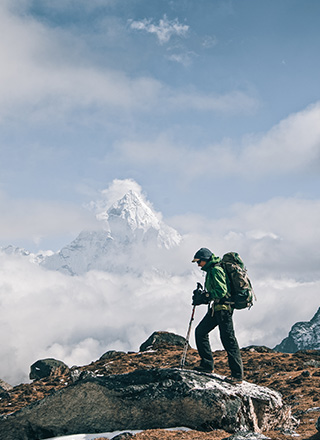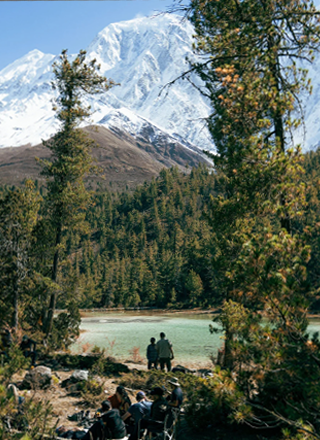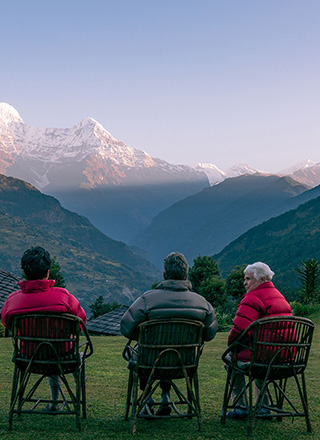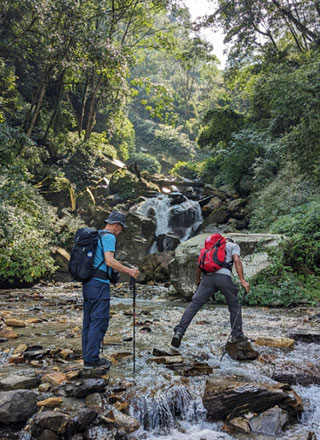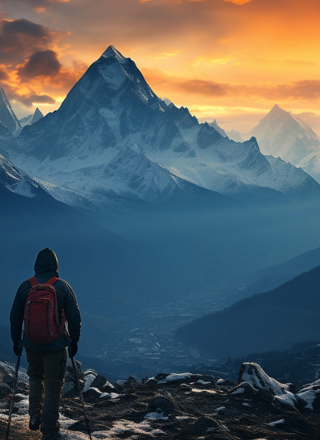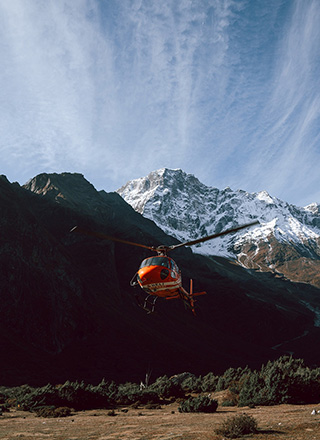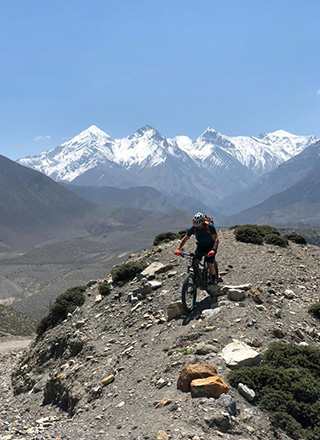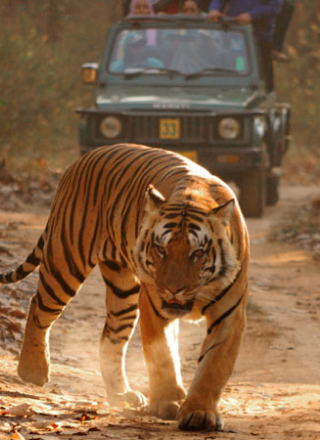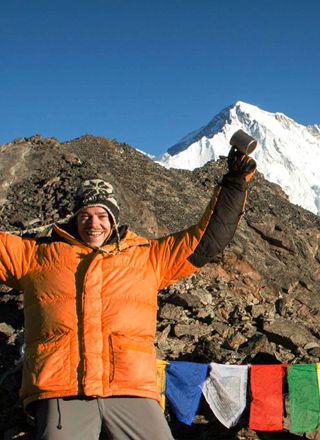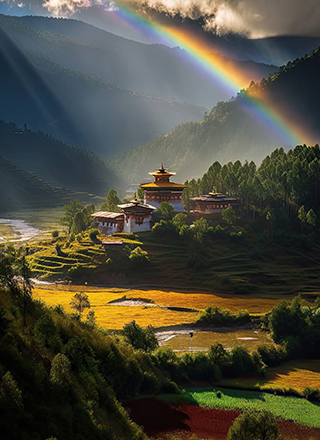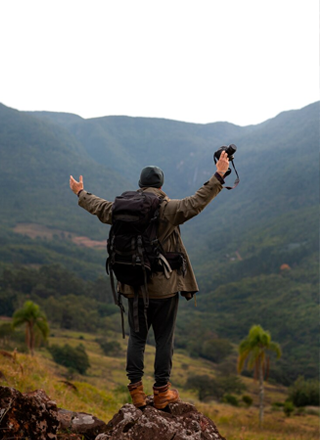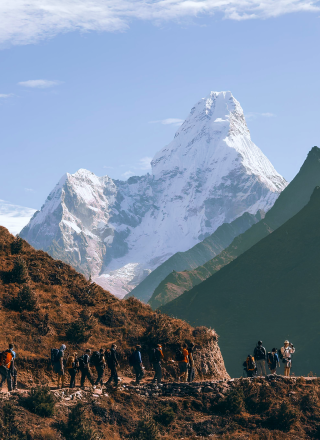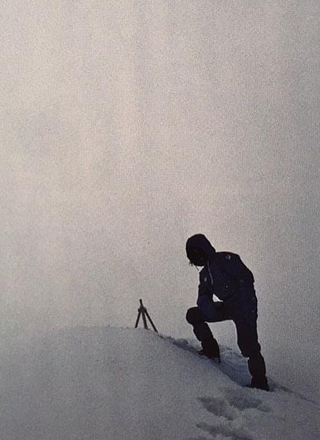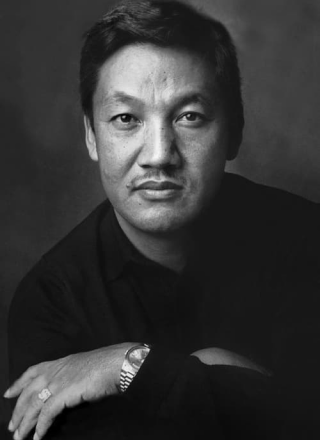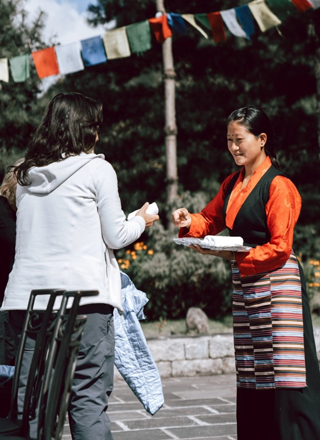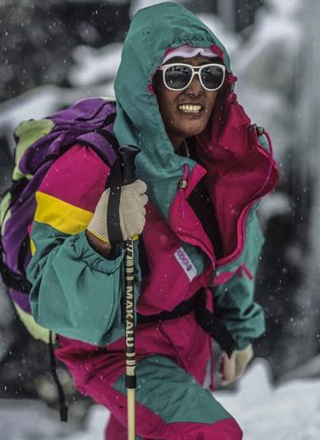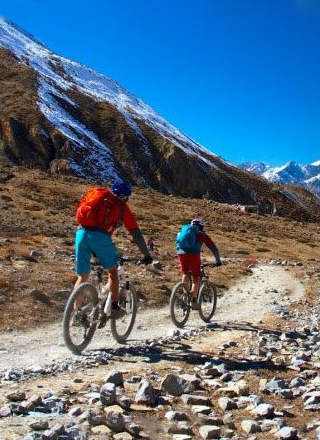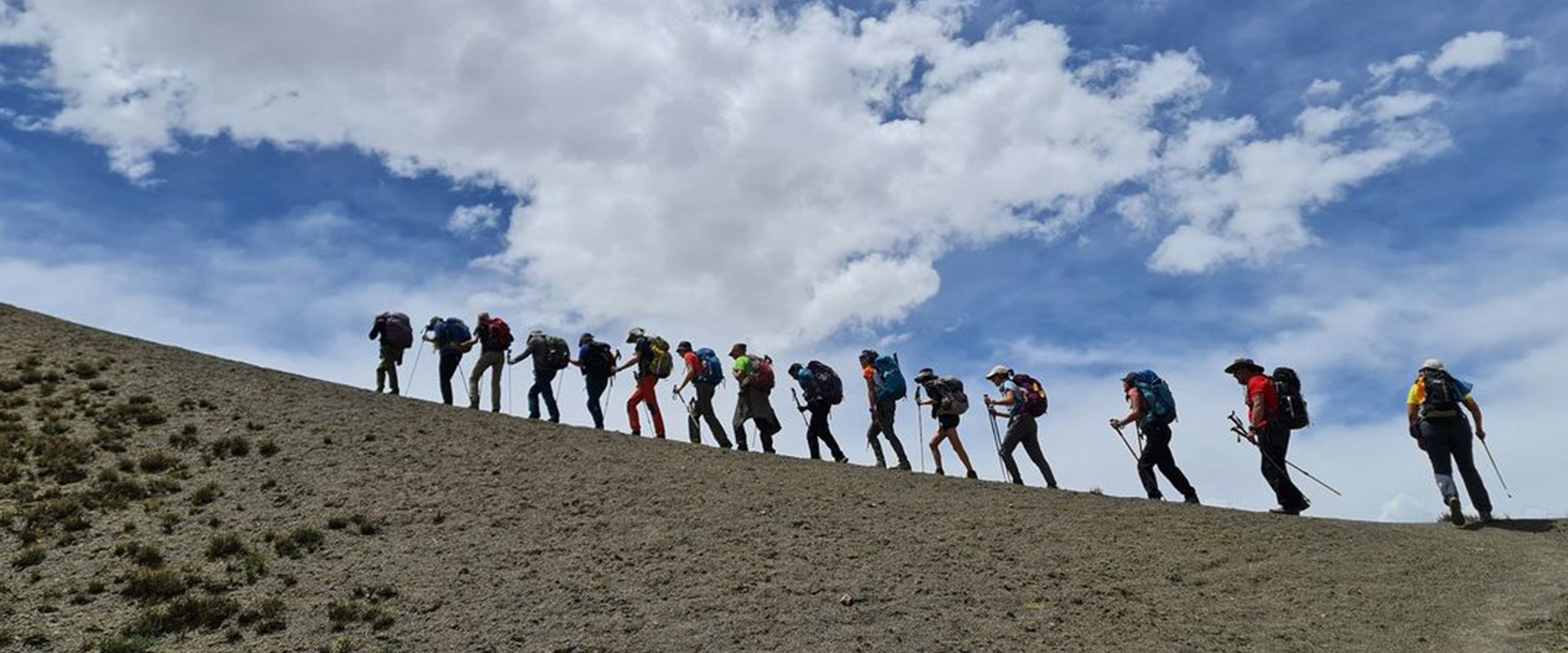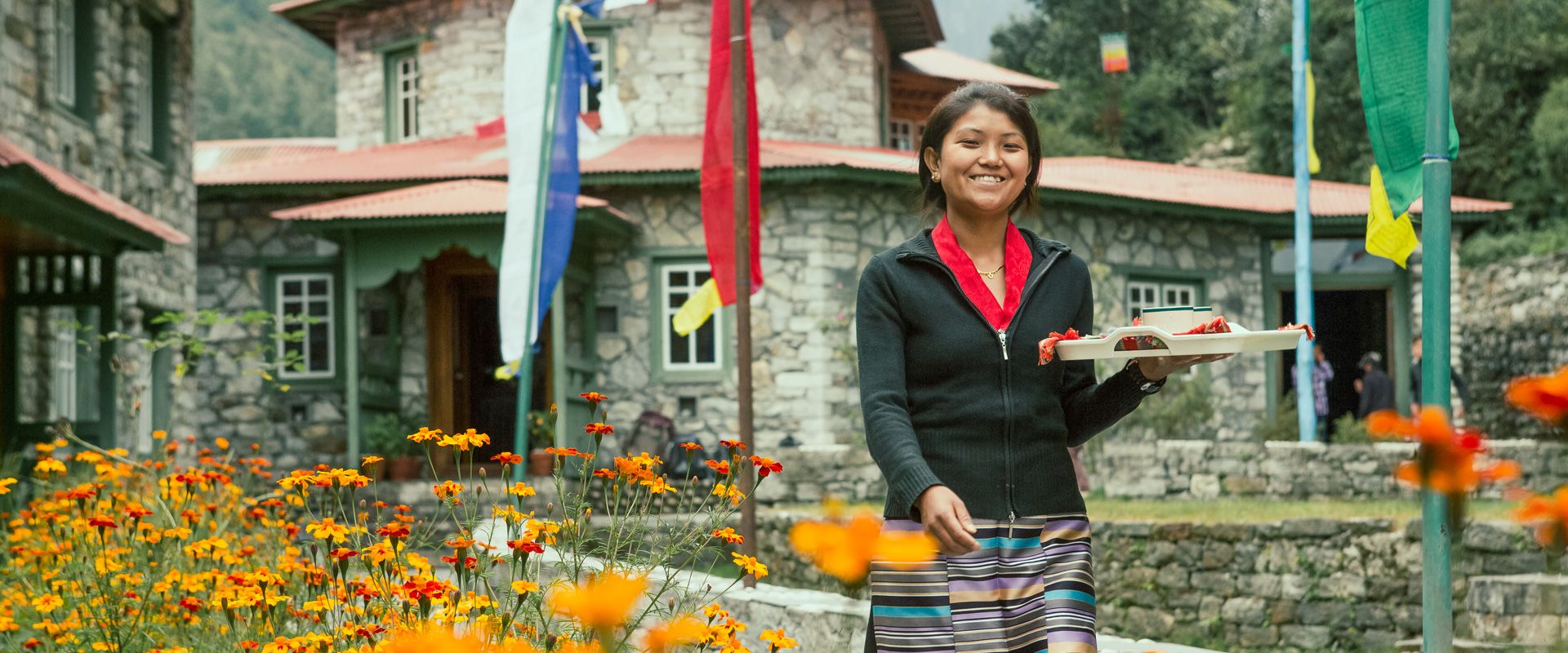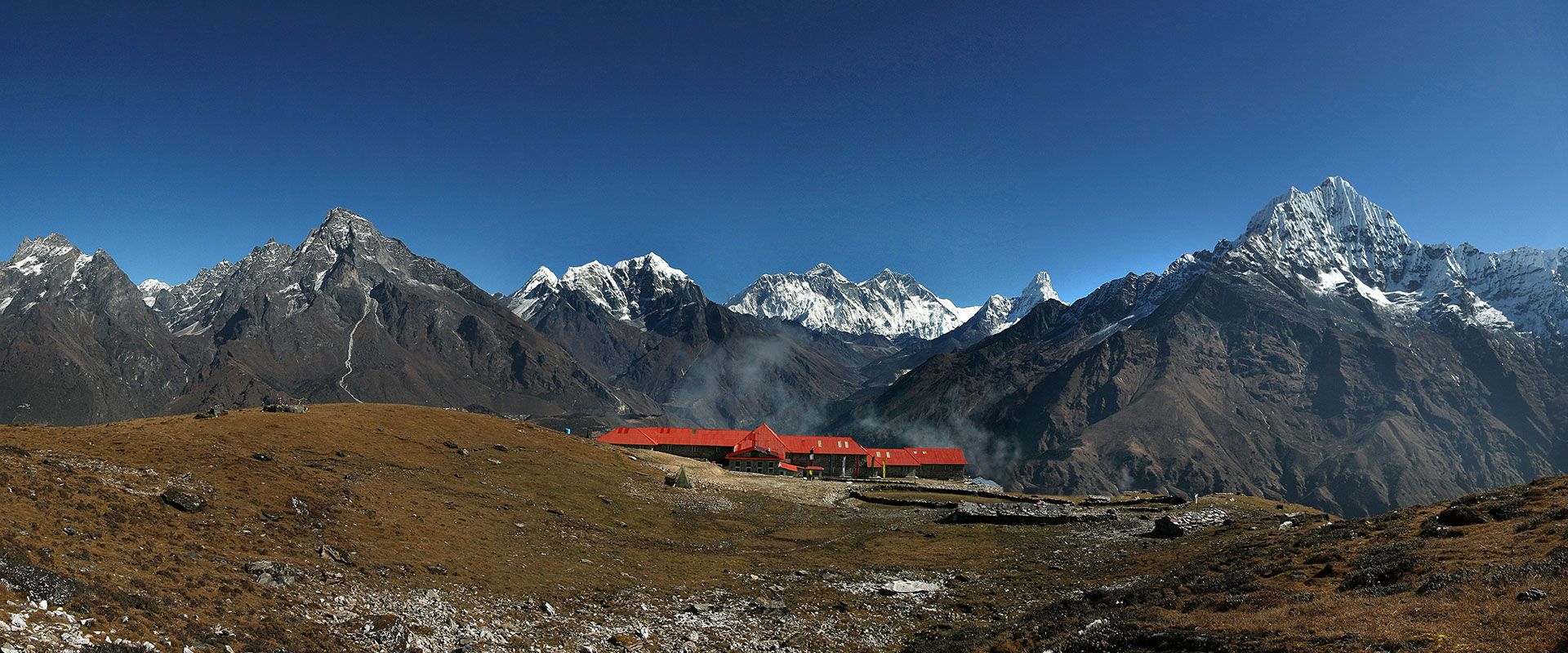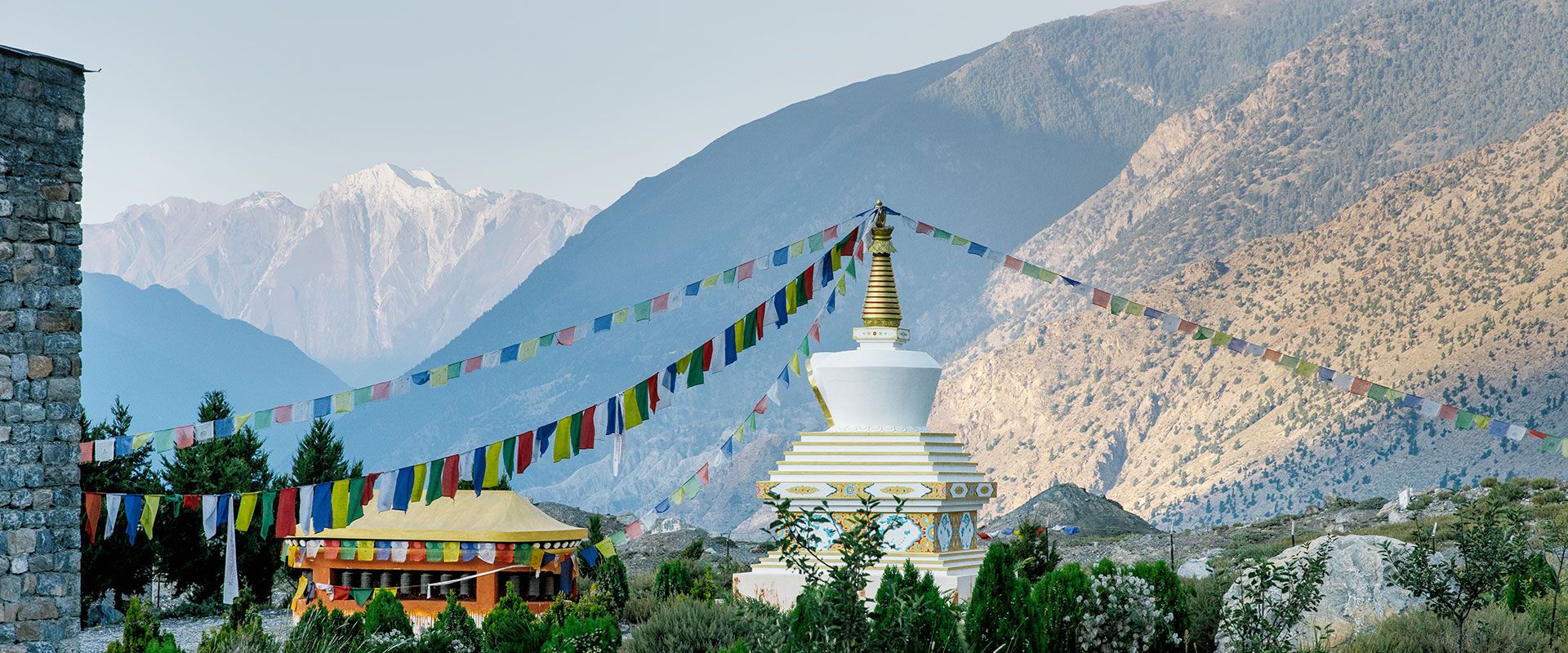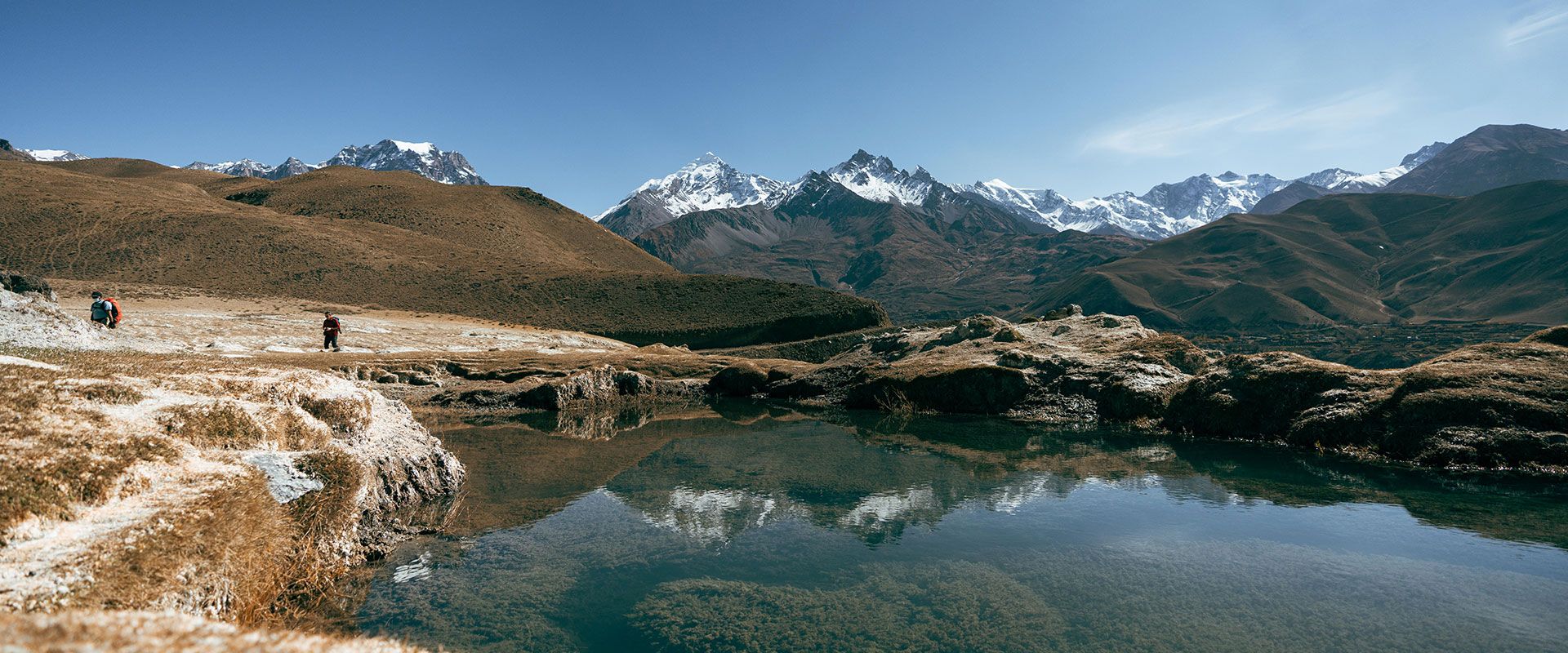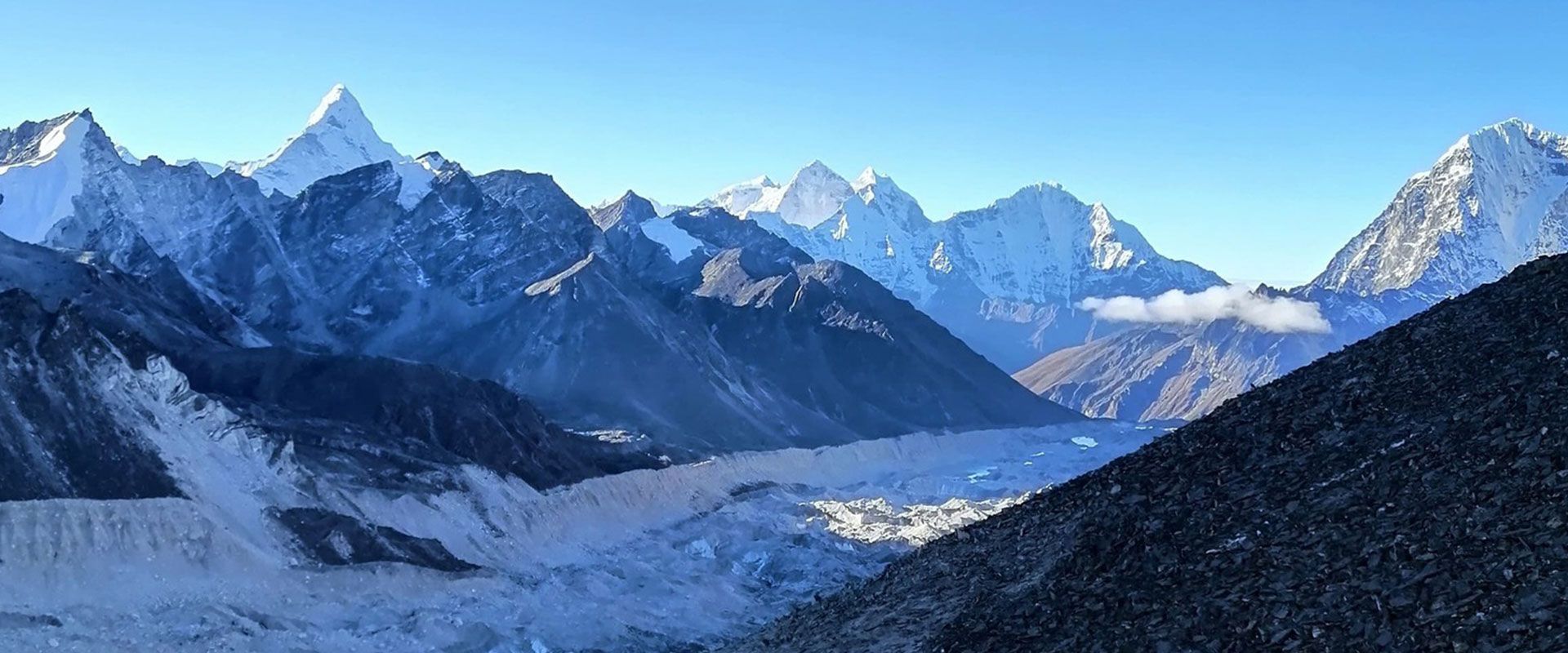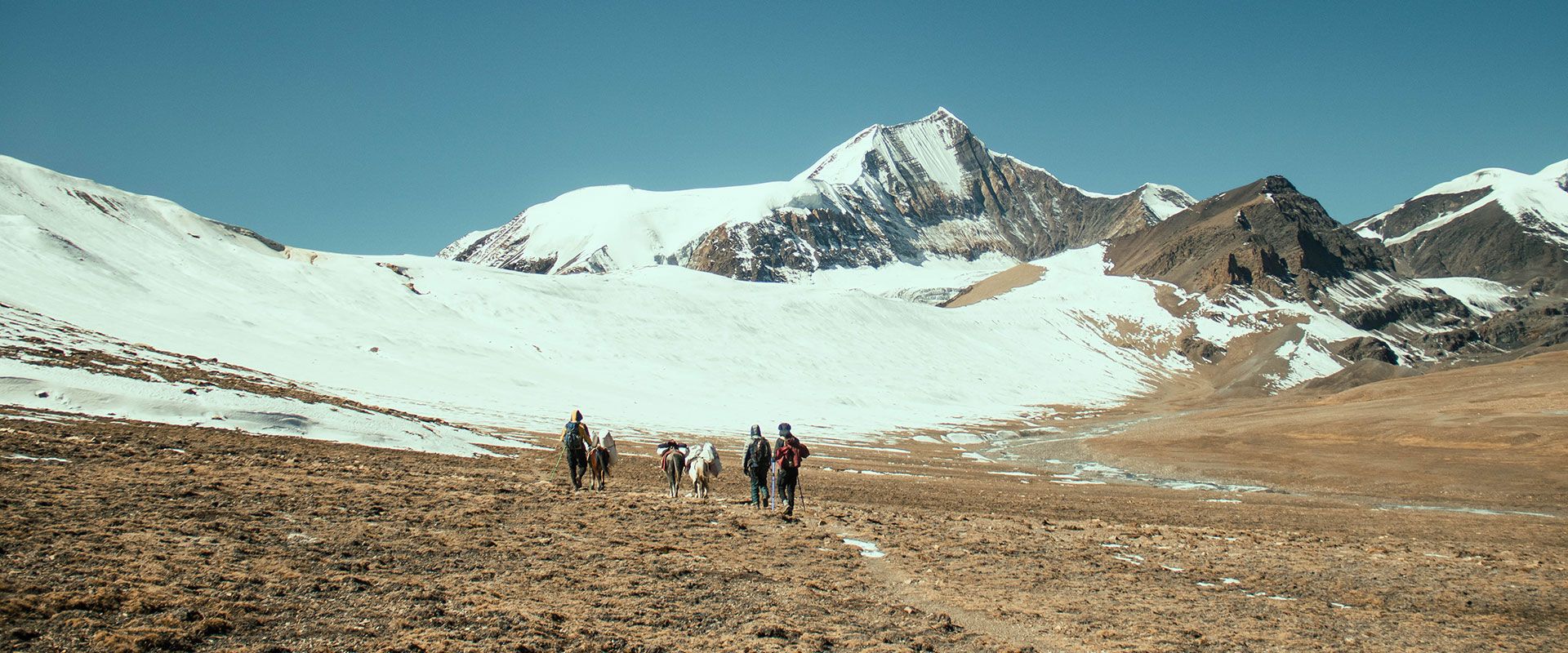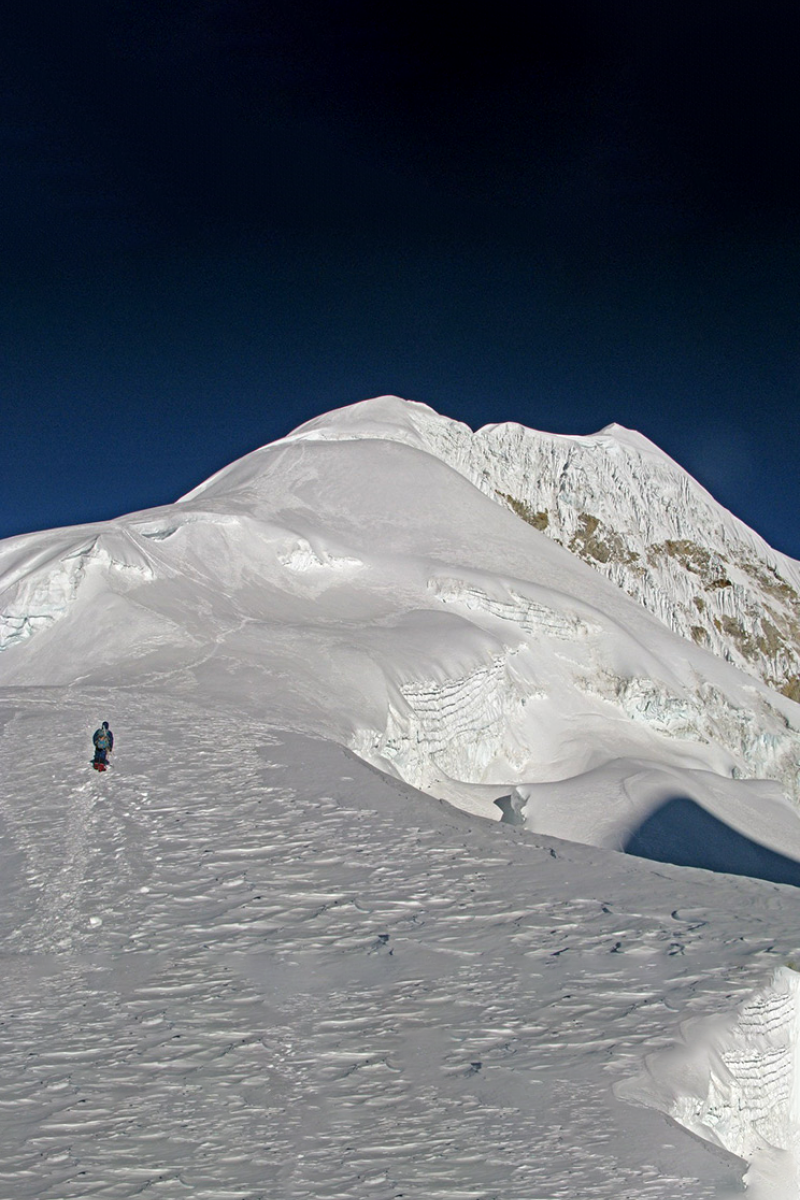- Travel Styles
- Destinations
- Signature & Charity Treks
- Special Project
- About Us
- Contact Us
17 days
16 Nights
Island Peak


OVERVIEW
Popular among both advanced climbers as well as novice climbers
Island peak is one of the most popular peaks in Nepal due to its accessibility and the location. It is popular among both advanced climbers as well as novice climbers because although physically demanding, the peak climb itself is less technical. At the elevation of 6189, Island Peak offers one of the best views of the Himalayan range including Everest, Lhotse, Nuptse, Amadablam and many other 8000M peaks in the region.
Trip Overview
Destination
Region:
Activity:
Max. Altitude:
Type:
Group size:
Difficulty:
Highlights
- Visit Kala Patthar, one of the most famous destination in Nepal near Everest Base Camp
- Reach the summit at 6188m above sea level
- View of Nuptse, Lhotse, Lhotse central and Lhotse Shar which are all 7000+
ITINERARY
TAILORED TRIP FOR YOU
Arrival in Kathmandu.
Depending on your arrival time, our representative will be at the airport to receive you and transfer you to your booked hotel. Evening time can be spent taking a tour in busy Thamel Street or just enjoying your beer in the hotel garden.
Meals: B
Fly to Lukla (2860m) and Trek to Phakding (2651m) – 3 Hrs Walk
The first flight to Lukla takes place very early in the morning. Depending on the time, you will have your breakfast either in the hotel or upon arrival in Lukla. You will be transferred to the domestic terminal of Kathmandu Airport from where you take your flight to Lukla which is about 40 minutes landing on the narrow, sleeping runway high above the Dudh Koshi River. Your porters and support staff will be waiting at the airport to help you with your luggage to start your trek to Phakding.
The trek to Phakding is easy walk for the first day with mostly downhill leg. The trek will take you through pastoral lands through several small villages and farms. Approximately after 3 hours we reach Phakding where we spend our overnight in the tea houses that are probably run by Sherpas.
Meals: BLD
Trek to Namche (3438m) – 4/5 Hrs Trek:
An easy walk today through Monjo will take you through the pine trees and glimpses of distant snow capped peaks. You will encounter few impressive waterfalls and yaks along the way taking necessary foods and other essentials for the trekkers as well as the locals. You will pass through the checkpoint before reaching Monjo where the officials check your permits. All trekkers to this region require TIMS cards and National Park Entry Fee. Your guide will sort out the paper works while you can stroll around for a bit. After this you officially enter the Sagarmatha National Park and a little way up the trail, you will arrive in Monjo where you will stop for lunch.
After Lunch, you start your trek through the wooded valley on a good trail crossing the river through high suspension bridge. Right after the bridge is the upward climb towards Namche. An hour and half long ascent to Namche is famous among the locals as “Namche Ko Ukalo” meaning the uphill of Namche. Its all uphill till you reach Namche, and about an hour before reaching Namche your hard work will be rewarded by your first view of Everest. Your guide will walk you to the lodge you will be staying overnight.
Meals: BLD
Acclimatization Day in Namche
Situated at high altitude, Namche Bazaar serves as an acclimatization stop for climbers to avoid altitude sickness. Namche Bazaar is the main center of the Khumbu region and is facilitates with government offices, internet, ATM’s, restaurants and a colourful market. You can also take a half day excursion to the internationally known Museum of Sherpa Culture and the traditional villages of Khunde and Khumjung. The location of our lodge is superb giving us a bird’s eye view over Namche and across the Valley to the serrated ridges of the Kongde range, while the magnificent peak of Thamserku (6623m) rises as a backdrop. Just a short walk away is a classic view of Ama Dablam, one of the most beautiful mountains in all Nepal and of Lhotse and Everest. This is an ideal place to spend the day, acclimatising to the new altitude before heading further up-valley to Thame.
Meals: BLD
Trek to Deboche (3820m) – 5/6 Hrs Trek
Today we will ascend towards the biggest monastery of the Everest region located at Tengboche. It encloses within Sagarmatha National Park which is listed in a UNESCO world heritage site. The trek to Phunki will be easy, but soon the ascending will start becoming challenging. The panoramic view of the Himalayas from the monastery shows us a divine universe built under the same range. We can observe a Buddhist religious ceremony.
Meals: BLD
Trek to Pheriche (4371m) – 5/6 Hrs Trek
With a magnificent view of a rhododendron forest followed by a bridge over the raging Imja khola (River), we ascend towards Pheriche which is a nice valley with Sherpa settlement in the region. This can be a great opportunity to have a lunch with the Sherpa locals and talk about their life in the Himalayas.
Meals: BLD
Trek to Lobuche (4600m) – 5/6 Hrs
From here on forth, trek will become more challenging due to the high altitude. By trekking steep to the top of a high hill, we will pass Dughla (Thukla). Before reaching Dughla, we trek across a wide pass which is much needed change from walking in a straight line. The company of Himalayas will be on all sides on our trek. After crossing Dughla, the trail passes through boulder-strewn slopes. As the trail drops to the Khumbu Glacier moraine, we find ourselves facing great peaks.
Meals: BLD
Visit Kalapatthar (5545m) and Back to Lobuche (4600m) – 6 Hrs Trek
Kalapattar’s altitude is often given as 5550m but the hill, further along, is a little bit higher. One fact is that you do not see the top of Kalapattar from Gorakshepe, only a false summit which is much lower. It is a fairly tiring walk up there unless you are well acclimatized. The views from the summit are memorable. Everest views are the best you can get from this place. Descent from Kalapattar is easy, just a quick straight down walk. We have our breakfast here and trek back to Lobuche the same route we came up.
Meals: BLD
Trek to Chukkung (4730m) – 5 Hrs Trek
We trek to Chukkung today taking the same route we took while coming up following Dugla and then onwards via Dingboche. An alternate route to Chukkung is also available that goes through the Kongma La pass which can be considered as the most strenuous part of the trek. Upon reaching Chukkung, a small settlements where we check our equipments before heading out to the base camp tomorrow.
Meals: BLD
Trek to Island Peak Base Camp
Following the fairly steep route towards the base camp, we move south as we walk towards the winding paths below the Lhotse glacier.
Arriving at the base camp, our crew will set up the tents which will give us enough time to observe the surrounding. We will take a quite training on the climbing before heading for the big climb tomorrow.
Meals: BLD
Summit Island Peak and Trek Back to Chukkung – 7/8 Hrs Trek/climb
A very early morning start today at around 1 AM in the morning will start after quick breakfast. The wind during the afternoon is strong which can hamper the summit push so we start early today. Climbing the steep hill, the trail narrows. Although not very difficult climb, we need to watch out for the rocky steps as we climb. Our guide will take care with the rope fixing with both main rope and fix ropes. The summit will be one experience that you will cherish with views of the panoramic Himalayas spread across beautifully. We head back towards base camp and then toward Chukkung.
Meals: BLD
Trek to Tengboche (3985m) – 5/6 Hrs Trek
We retrace our back towards Tengboche, a small village on top of the hill with ancient monastery overlooking Thamserku.
Meals: BLD
Trek to Namche – 5/6 Hrs Trek
Back to Tengboche from where we continue retracing towards Namche. We will be reaching Namche approximately in the late afternoon.
Meals: BLD
Trek to Lukla – 5/6 Hours
After Overnight at Namche, early morning we will descend back to Lukla. The trekking though the trail will be exciting as well as easier as it will go through the forest of rhododendron and pines. We will pass Monjo after a short walk and then to Phakding. We stay on the same trail and advance towards Nurning and approximately 8 hours of the trek we will finally be reaching Lukla.
Meals: BLD
Fly Back to Kathmandu
We will enjoy our last view of the high mountains while flying back to the Kathmandu from Lukla. The snow-capped mountains will be worth to watch. After 25 minutes of flight, our representative will be waiting for you at domestic airport to take you back to the hotel where you can enjoy your chilled beer and warm shower.
Meals: BLD
Free Day in Kathmandu
You are free today in Kathmandu that you deserve very much after the strenuous trek and the summit. Evening, we will be transferred to a fine restaurant “Le Sherpa” for dinner.
Meals: B
International Departure
Depending on your flight time you will be transferred to the airport. The airport check-in is 3 hours prior to the departure time and the hotel checkout time is 12 PM. In case your flight is late evening please let us know if you require half day use of the hotel.
Our representative will meet you at the hotel and transfer you to the airport.
Meals: B
Included
- Airport/Hotel/Airport Transfer
- 3 Nights hotel Kathmandu in Mulberry on BB Twin Room
- 12 nights food & accommodation in Local Lodge on FB Twin Room
- 1-day camping Services with food & Tent at Base Camp
- Flight: Kathmandu-Lukla-Kathmandu with airport tax
- Island Peak Permit Fee
- National Park & Khumbu Permit Fee
- Climbing equipment; Rope/Ice crew/snow bar/ carabiners
- High Camp Food & Camping equipment
- 04/06 Pax 1 Climbing Sherpa Sirdar + 1 Climbing Sherpa
- 07/09 Pax 1 Climbing Sherpa Sirdar + 2 Climbing Sherpa
- 11/12 Pax 1 Climbing Sherpa Sirdar+ 3 Climbing Sherpa
- 1 porter-every two members
- All staffs insurance & daily wages food and equipment
- Farewell Dinner in Kathmandu
Not Included
- Personal Equipment & Insurance
- Nepal Visa fee US$ 40 per person
- Alcoholic Beverages, Telephone & Laundry
- Any personal nature expenses.
- Emergency Evacuation if required
- Tips for Staffs
ACCOMMODATIONS
WHERE YOU WILL STAY
3 NIGHTS KTM HOTEL
1 NIGHT CAMP
11 NIGHTS LOCAL LODGES & 1 NIGHT YMH LODGE
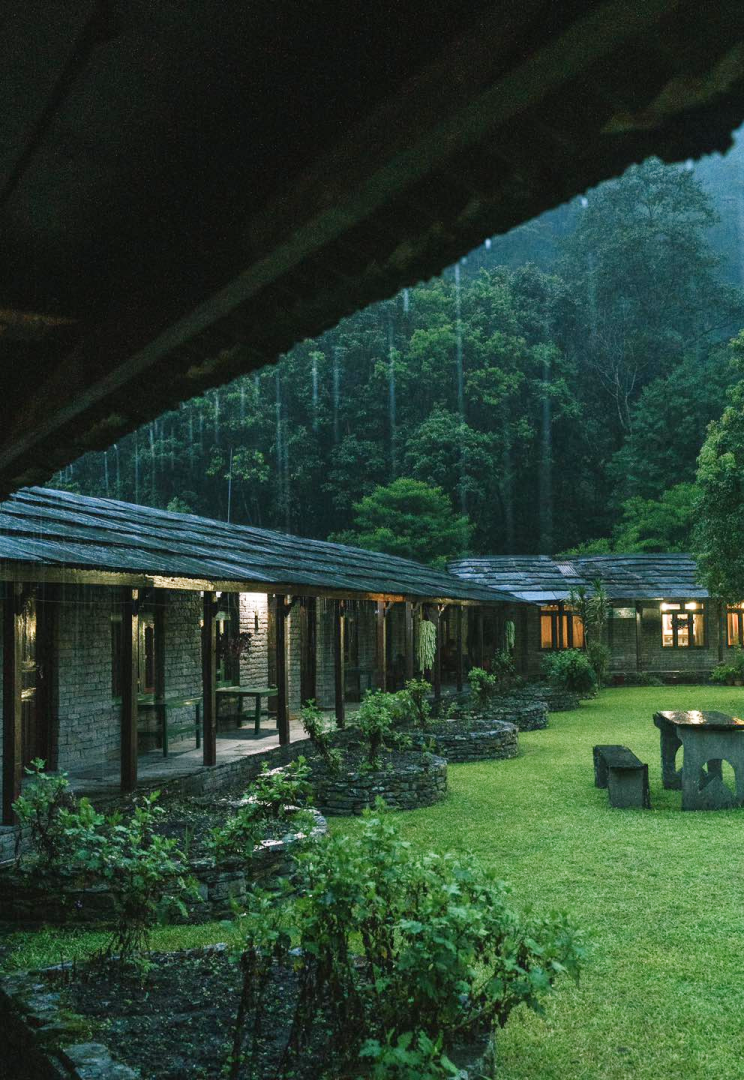
FAQs
ESSENTIAL INFO
adventure that speaks to your heart.
Most nationalities require a visa for Nepal, which can be obtained in advance or on entry. If you wish to apply before departure the current visa cost is £20 for a 15 day visa and £35 for a 30 day visa for UK passport holders. The current cost of a visa on arrival is US $25 for 15 days, US $40 for 30 days or if extending your stay $100 for 90 days. All are multiple entry. The visa on arrival fee can be paid for in cash in US Dollars, Pounds Sterling or Euros. You will also need a passport photo. Application forms are available in the immigration hall (or for electronic passports there are visa registration machines which, after inserting your passport, automatically fill out a form for you). You must firstly join the queue to pay the visa fee, and then go to the relevant immigration desk to obtain your 15, 30 or 90 day visa stamp. There can be long queues for visas on arrival.
Non UK nationals should check requirements with their nearest embassy (a few nationalities are not permitted visas on arrival).
There are no mandatory vaccination requirements. Recommended vaccinations are: Polio, Tetanus, Diphtheria, Typhoid, Hepatitis A. The risk of malaria is present in certain regions only (such as Chitwan); you may wish to consult your GP or travel health clinic for further advice. Dengue fever is a known risk in places visited. It is a tropical viral disease spread by daytime biting mosquitoes. There is currently no vaccine or prophylaxis available for Dengue, and therefore the best form of prevention is to avoid being bitten. We recommend you take the usual precautions to avoid mosquito bites. Most of our trips to Nepal go to high altitudes where there is a risk of being affected by Acute Mountain Sickness. Our itineraries are designed to enable everyone to acclimatise to these altitudes, but you should be aware that it is still possible for you to be affected. Please refer to the TRIP NOTES for complete advice on AMS.
Breakfast is included throughout the trip and all meals are provided while camping (all breakfasts, 3 lunches and 2 dinners).
Breakfast is included throughout the trip and all meals are provided while camping. On trek the breakfast will be a set menu usually consisting of porridge and toast. Any additional items that are not included in the set menu should be ordered and paid for separately. We do not include lunch and dinner in the tea-houses, allowing you to choose what you want to eat and when. Although most lodges have almost identical menus, they are reasonably extensive and offer a varied selection, ranging from traditional Nepalese dal bhat to pizza and apple pie.
Although meat is available in the teahouses, we advise against eating it on trek. The meat has often been carried in the heat from lower altitudes for several days before reaching the lodges, and can cause stomach upsets or illness. Germs can also be spread by handling dirty money – we recommend using hand sanitiser.
If you buy imported food and drink whilst on trek you will spend more than the suggested amount.
Drinking Water
Staying hydrated is important when undertaking any physical activity but particularly so at altitude where it is generally recommended to drink at least 3-4 litres per person per day.
We strongly encourage you not to buy bottled water on trek as this contributes to the growing problem of plastic pollution in Nepal’s trekking areas.
All teahouses will provide cold water free of charge, if requested. Although this should not be drunk untreated, we recommend that you bring a reusable bottle with a wide opening (Nalgene or similar) with you and use a SteriPEN to treat it with. A SteriPEN is a handheld UV water purifier – small, lightweight and battery powered so easy to pack for a trek. In Nepal’s trekking regions most of the bottled water isn’t strictly ‘mineral water’ anyway but is UV treated, so it’s exactly the same technology. It’s quick to use, far more effective than purification tablets, and the water is ready immediately. It’s fine to use a SteriPEN on non-boiled water so long as it isn’t cloudy or full of sediment (which is uncommon in these regions).
SteriPENs are widely stocked on Amazon, outdoor shops and other online retailers; look for the latest models but avoid USB charging ones. Better still, a SteriPEN will pay for itself over the course of the trek and you won’t leave behind a single plastic bottle – you will end up spending the same or even less than you would on bottled water, plus you can keep it for future trips.
If you prefer not to invest in a SteriPEN, the teahouses also sell boiled water for approx. Rs150-300 per litre (the price increases the higher you trek) which should not require treating. This is also perfect for a bedtime refill as it can double up as a hot water bottle.
While camping boiled water is supplied for drinking.
The main trekking season in Nepal is from October to mid-May when daytime temperatures at most altitudes are generally comfortable for walking, the sky is clear much of the time and rain and snow are occasional occurrences. Daytime temperatures will vary from 15ºC to 35ºC in the Kathmandu Valley to around 10ºC at 3,600m and progressively lower the higher we go.
Different seasons offer different advantages for trekking.
Post Monsoon/autumn: Mid-September to November. This is the main trekking season in Nepal. Day temperatures in Kathmandu are approximately above 20ºC. Skies are usually clear and days on trek are sunny and mild with clear mountain views. At the highest altitudes although the days can be nice and sunny the temperatures can drop to 10ºC and much lower. Nights will be colder with temperatures dropping as low as minus 10ºC and lower at the highest altitudes.
Pre-monsoon/spring: March to May. Both day and night temperatures will be warmer in general but haze will often build up in the afternoons. It is very hot in the lowlands and temperatures rise to 35ºC in Kathmandu. Flowers bloom in this season and this is one of the reasons people chose to trek in spring.
Snow can be expected on any departure, usually at the higher altitudes. Summit day will be a very early start (usually about 2am) and will be extremely cold. Although mostly it is calm and clear on summit day the mountain does occasionally get high winds. You need to be equipped for temperatures as low as minus 25ºC plus wind chill on summit day.
Please remember that in any mountain area the weather is never wholly predictable and you should be prepared and equipped to deal with any differences in weather beyond the conditions described above.
This is a Tough+ trek. It is activity level 9 with 16 days walking and full porterage throughout. The maximum altitude is 6,189m (or 5,545m without Island Peak) and the average is 3,680m. There are some steep ascents and descents and some narrow trails. As this trek also ascends to very high altitudes participants should be confident of their physical fitness and must have previous experience of trekking at altitude and in snow.
Although it is not compulsory to participate in the climb (the summit attempt is optional), anyone who does must have previous ice axe and crampon experience and know how to use a jumar and abseil device. There will be equipment checks and practice sessions for rope use, ice axe, crampon and harness use, abseiling and crevasse rescue. For safety reasons it is compulsory to participate in these sessions. If you do not take part the leader and climbing Sherpas will not allow you to take part in the climb.
Though technically harder than Mera Peak, for those with the necessary experience this expedition is within the reach of those seeking their first Himalayan summit. The climb requires strong lungs and a great deal of will power – it is graded alpine PD+ and starts with some rocky scrambling to a glacier. We cross the glacier roped up (there is one ladder to cross), and then come to a 200m steep 40-45 degree headwall, which leads to a 20m summit ridge. We will rope up to cross the glacier and you will be walking with an ice axe, crampons and plastic boots. There are fixed ropes up the headwall (approximately 200m) and along the summit ridge. On the ascent you will need to use a jumar and on the descent you will need to use an abseil device.
Please be aware that altitude can have a significant affect on your physical state. It is important that you take heed of the leader’s advice and decisions at all times. The leaders are trained in first aid and are well aware of AMS symptoms and will keep a close eye on the group. We ask you to refer to the altitude warning within the Trip Notes.
The climb itself is not recommended for anyone with a fear of heights or vertigo and the main trail itself crosses three modern suspension bridges over rivers and valleys – all of these have mesh sides but some are quite long and high.
ESSENTIALS
EQUIPMENT CHECKLIST
Ensure you have all the essentials to make your trip
safe and enjoyable.
Body Wear
- Down Suit- Recommended Absolute Zero Oversuit by Mountain Hardwear, or Ulvetanna Suit by Berghaus, or The Himalayan Suit by The North Face, or the Expedition Suit by Rab.
- Waterproof Jacket and Over trousers that goes over your alpine boot
- Balaclava- Recommended The North Face A3543 Unisex Wool Balaclava or similar covering nose and face
- Fleece or woolen hat
- Earmuffs/Ear warmers (optional)
- Buff Scarf / thin face mask
- Long sleeve Thermal shirt and Trousers- Recommended anti-sweat
- Anti-sweat T-shirt
- Fleece trouser and jacket or warm jumper – Recommended not thick but warm enough that fits inside the Gore Tex pant, Patagonia, or The North Face, or Mountain Hardwear
- Thermal inner trouser
- Down jacket with hoodie
- Hiking pant
- Ultra-Soft Running/Hiking Socks (2 pair – new)
- Smartwool Mountaineering Socks (2 pair – new)
- Trekking socks (4-5 pair)
- Alpine bootRecommended La Sportiva Men’s Nepal EVO GTX Boot or similar
- Mountaineering bootRecommended La Sportiva Olympus Mons Evo or Millet Everest GTX
- Trekking boots
- Hollow Out Outdoor Slipper
Hand wear
- Liner gloves- thin and warm
- Down mitts- Recommended The North Face, or Marmot Expedition mitt, or Mountain Hardwear Absolute Zero Mittand.
- Mountain Gloves- Recommended water & wind proof
- Fleece or woolen thin gloves for trekking
Optional Items
- Trekking poles
- Pulley device
- Trainers or similar for use in the lodges
- Shorts
- Base layer leggings
- Snow Gaiter
- Sleeping bag liner
- Pillowcase
- Travel clothes
- Camera
- Repair kit – (egg. needle, thread, duct tape)
Washing Kit & Toiletries
- Waterproof washing kit bag
- Towel – medium size
- Washing soap, towel, tooth pest, tooth brush etc.
- Sun Lotion Enough +30SPF (including total bloc for lips, nose etc.)
- Hand wash & sanitizer
- Toilet paper (you can buy this in the lodges)
- Wet tissue
Harness Set
- Light weight Harness- Recommended DMM Super Couloir, or Black Diamond Couloir Harness, or Mammut Ophira 3 Side climbing harness
- Ascender (Jummer)- Recommended Petzl or Black Diamond
- Abseiling device- Recommended Black Diamond ATC Guide Bley Device, or Petzl GRIGRI 2 Grey Belay, or Descent Device D14BG
- Screw gate Carabiners (2 large, 2 small size)- Recommended Petzl or Black Diamond
- Bent Gate Carabiners (2 medium size)- Recommended Petzl or Black Diamond
- 6 mm rope- Recommended 2 meters UIAA tested
- 6 mm rope- Recommended 5 meters UIAA tested
- 1 X tape sling- Recommended 120 cm UIAA tested
- Dynamic 8.9 mm rope (single rope) – Recommended 2 m UIAA tested
Climbing Equipments
- Climbing helmet- Recommended Black Diamond
- Ski Googleswith UV protection and anti-fog system
- Sunglasses with UV protection
- Snow Googleswith 100% UV protection and anti-fog system
- Headlamp- Recommended Black Diamond & Petzl
- Spare batteries- Recommended Energizer Ultimate Lithium batteries
- Classical Alpine ice-axe- Recommended (70-90 cm) Petzl, or Grivel Air Tech, or Black Diamond
- Crampons that fits Mountaineering and Alpine boots- Recommended Grivel G-12 New-Matic Crampons
Other Equipments
- 55-65 Litre Rucksack- Recommended POD Black Ice, Crux AK47 (extendable) and Crux AK57
- 30 Litre Rucksack with cover
- Base Camp Duffel with padlock for climbing equipment’s – XXL
- Duffel Bag for trekking with padlock for clothing – L
- 5 season sleeping bag with compression bag- Recommended North Face and Mountain Hardwear
- Sleeping bag (comfort rated – 15 ºC)
- 2 X 5 season foam sleeping mat- Recommended 72 x 20 inches (20 x 5 x 5.5 inches folded) and weigh around 14 ounces
- Swiss Army Knife with multi tools system or leather men
- 1 liter stainless steel thermos – that works in extreme weather condition
- Water bottles 1 Litre X 2
- Basic First Aid Kit including: antiseptic cream, throat lozenges, diarrhea treatment (Imodium), altitude (Diamox), painkillers, plasters and blister treatment, insect repellent, and re-hydration salts (Dioralite). Glucose tablets and multi-vitamin tablets are also a good idea.
“Six out of Six”
Yeti Mountain Home Thame was the third of six Yeti Mountain Homes we stayed in. Loved the ambiance. Loved the village. A huge bedroom. Once again – brilliant food and warm welcoming staff. The decor was stunning and the house arrangement interesting.
LOIS OMAN

“Six out of Six”
Yeti Mountain Home Thame was the third of six Yeti Mountain Homes we stayed in. Loved the ambiance. Loved the village. A huge bedroom. Once again – brilliant food and warm welcoming staff. The decor was stunning and the house arrangement interesting.
LOIS OMAN

“Six out of Six”
Yeti Mountain Home Thame was the third of six Yeti Mountain Homes we stayed in. Loved the ambiance. Loved the village. A huge bedroom. Once again – brilliant food and warm welcoming staff. The decor was stunning and the house arrangement interesting.
LOIS OMAN

FEATURED JOURNEYS
ALSO SEE THESE TRIPS
We have handpicked some of our favourite iconic Nepal trips we think you will love.
ENQUIRY
CONTACT OUR TRAVEL EXPERTS
within 24 hours.
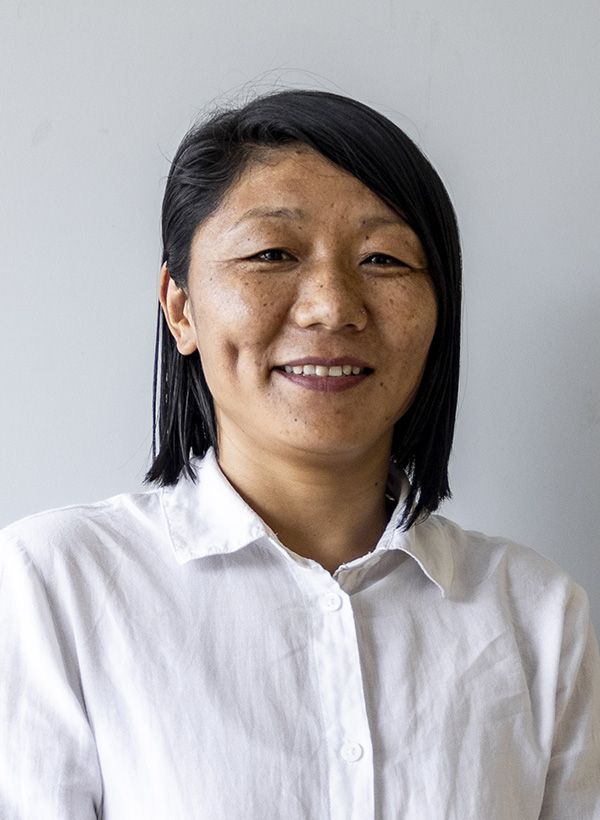
NIRMALA GURUNG 
+977 9801223978
nirmala@thamserku.com
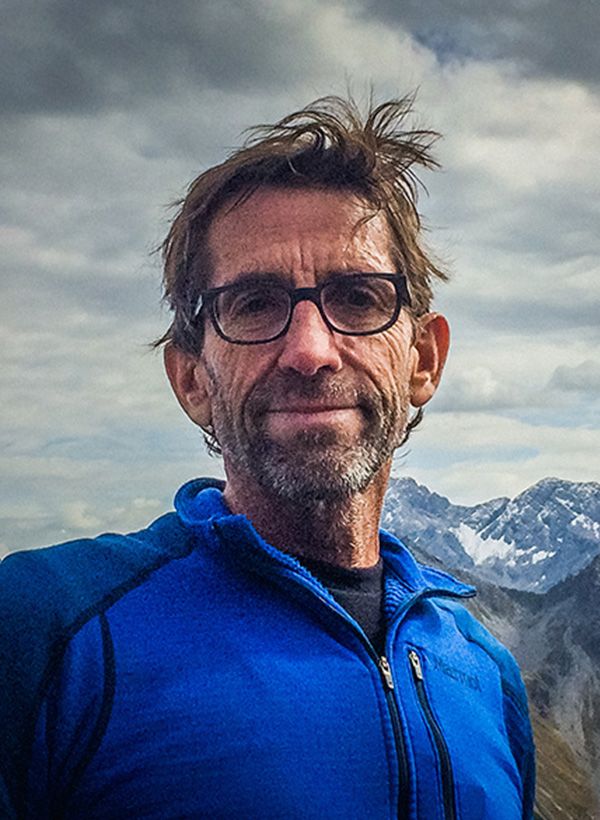
MICHAEL SCHOTT 


+49 174 9755492
m-schott@neumann-grafik.de
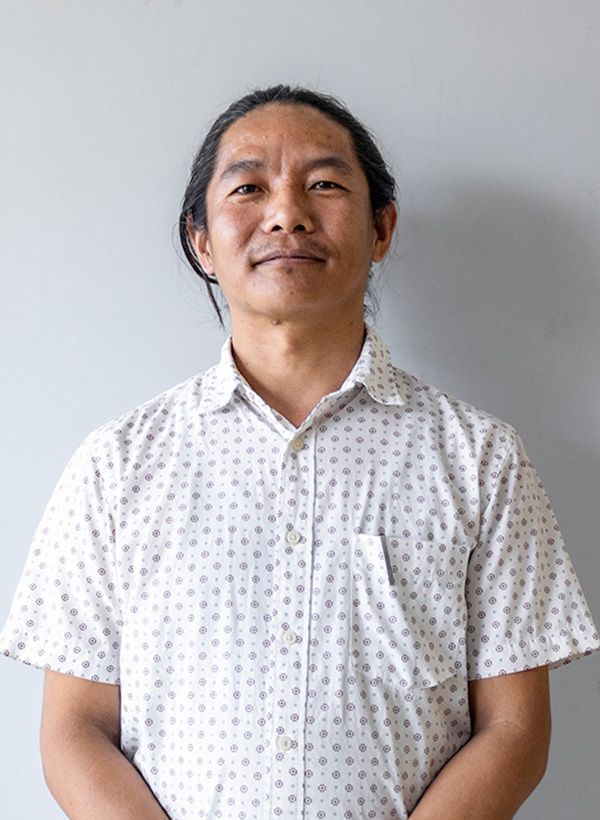
KUMAR RAI 
+977-9801236280
kumar@thamserkutrekking.com
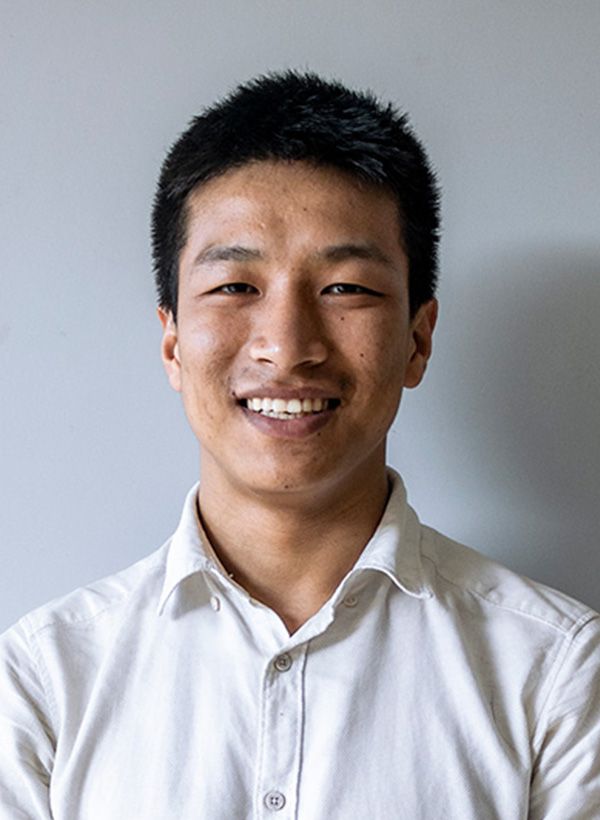
NIMTE SHERPA 
+977-9801223977
info@thamserkutrekking.com
BOOK YOUR TRIP BOOK YOUR TRIP BOOK YOUR TRIP BOOK YOUR TRIP BOOK YOUR TRIP BOOK YOUR TRIP BOOK YOUR TRIP BOOK YOUR TRIP BOOK YOUR TRIP BOOK YOUR TRIP BOOK YOUR TRIP BOOK YOUR TRIP BOOK YOUR TRIP BOOK YOUR TRIP BOOK YOUR TRIP BOOK YOUR TRIP BOOK YOUR TRIP BOOK YOUR TRIP BOOK YOUR TRIP BOOK YOUR TRIP BOOK YOUR TRIP BOOK YOUR TRIP BOOK YOUR TRIP BOOK YOUR TRIP BOOK YOUR TRIP BOOK YOUR TRIP BOOK YOUR TRIP BOOK YOUR TRIP BOOK YOUR TRIP BOOK YOUR TRIP BOOK YOUR TRIP BOOK YOUR TRIP BOOK YOUR TRIP BOOK YOUR TRIP BOOK YOUR TRIP BOOK YOUR TRIP BOOK YOUR TRIP BOOK YOUR TRIP BOOK YOUR TRIP BOOK YOUR TRIP BOOK YOUR TRIP BOOK YOUR TRIP
